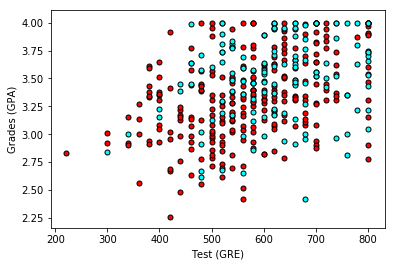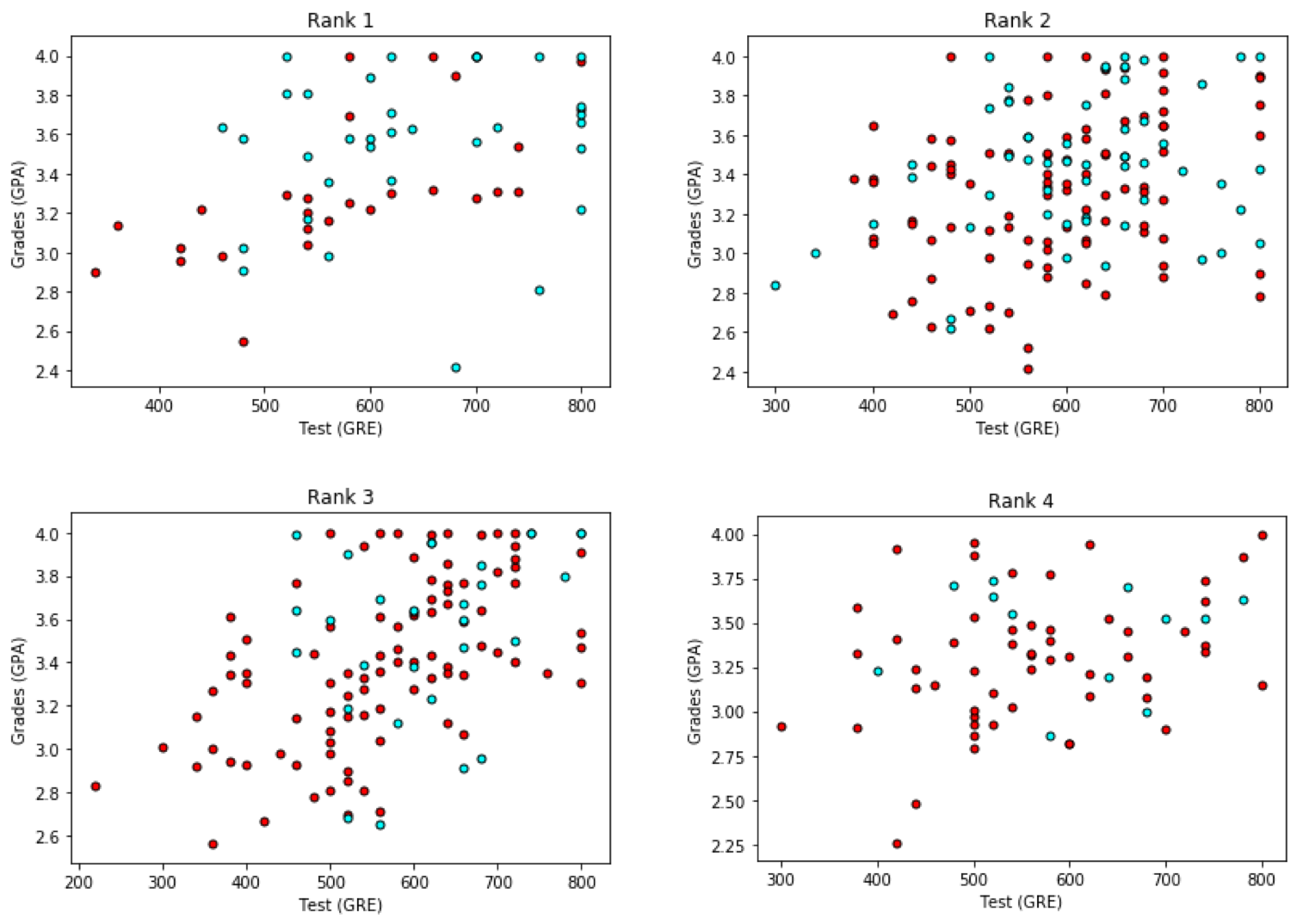32. Mini Project: Students Admissions in Keras
Mini Project: Student Admissions in Keras
So, finally we're ready to analyze a whole dataset on Keras. We'll analyze the following dataset of student admissions at UCLA:
'https://stats.idre.ucla.edu/stat/data/binary.csv'
As you follow along this lesson, you are encouraged to open the referenced Jupyter notebooks. We will present a solution to you, but please try creating your own deep learning models! Much of the value in this experience will come from playing around with the code in your own way.
Cloning the repo and opening the notebook
In order to get up and running, please clone the materials from the GitHub repository by executing the following command in the terminal:
git clone https://github.com/udacity/aind2-dl.git
Follow the instructions in the repository to set up the Conda environment and install the necessary dependencies.
For this lab, navigate to the main branch, and open Student_Admissions.ipynb.
Studying the data
The dataset has the following columns:
- Student GPA (grades)
- Score on the GRE (test)
- Class rank (1-4)
First, let's start by looking at the data. For that, we'll use the read_csv function in pandas.
import pandas as pd
data = pd.read_csv('https://stats.idre.ucla.edu/stat/data/binary.csv')
print(data)
Here we can see that the first column is the label y, which corresponds to acceptance/rejection. Namely, a label of 1 means the student got accepted, and a label of 0 means the student got rejected.
When we plot the data, we get the following graphs, which shows that unfortunately, the data is not as nicely separable as we'd hope:

So one thing we can do is make one graph for each of the 4 ranks. In that case, we get this:

Pre-processing the data
Ok, there's a bit more hope here. It seems like the better grades and test the student has, the more likely they are to be accepted. And the rank has something to do with it. So what we'll do is, we'll one-hot encode the rank, and our 6 input variables will be:
- Test (GPA)
- Grades (GRE)
- Rank 1
- Rank 2
- Rank 3
- Rank 4.
The last 4 inputs will be binary variables that have a value of 1 if the student has that rank, or 0 otherwise.
So, first things first, let's notice that the test scores have a range of 800, while the grades have a range of 4. This is a huge discrepancy, and it will affect our training. Normally, the best thing to do is to normalize the scores so they are between 0 and 1. We can do this as follows:
data["gre"] = data["gre"]/800
data["gpa"] = data["gpa"]/4Now, we split our data input into X, and the labels y , and one-hot encode the output, so it appears as two classes (accepted and not accepted).
X = np.array(data)[:,1:]
y = np_utils.to_categorical(np.array(data["admit"]))Building the model architecture
And finally, we define the model architecture. We can use different architectures, but here's an example:
model = Sequential()
model.add(Dense(128, input_dim=6))
model.add(Activation('sigmoid'))
model.add(Dense(32))
model.add(Activation('sigmoid'))
model.add(Dense(2))
model.add(Activation('sigmoid'))
model.compile(loss = 'categorical_crossentropy', optimizer='adam', metrics=['accuracy'])
model.summary()The error function is given by categorical_crossentropy, which is the one we've been using, but there are other options. There are several optimizers which you can choose from, in order to improve your training. Here we use adam, but others that are useful are rmsprop. They use a variety of techniques that we'll outline in the following lectures.
The model summary will tell us the following:

Training the model
Now, we train the model, with 1000 epochs. Don't worry about the batch_size, we'll learn it soon.
model.fit(X_train, y_train, epochs=1000, batch_size=100, verbose=0)Evaluating the model
And finally, we can evaluate our model.
score = model.evaluate(X_train, y_train)Results may vary, but you should get something somewhere over 70% accuracy.
And there you go, you've trained your first neural network to analize a dataset. Now, in the following nodes, you'll learn many techniques to improve the training process.